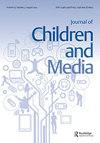Characters’ realism, not familiarity, improved Chinese Children’s learning from video
IF 2.1
3区 心理学
Q2 COMMUNICATION
引用次数: 0
Abstract
ABSTRACT Characters in educational videos have been shown to help children learn and transfer knowledge. The aim of this study is to explore the influence of realism and familiarity of characters on children’s video learning. The participants were 90 4- to 6-year-olds. The children watched a video in which a character demonstrated how to construct simple gears, and then completed the same task to test the effect of the character’s realism and familiarity on their learning and transfer of STEM knowledge. A 2 (high-reality vs. low-reality) × 2 (familiar, unfamiliar) experiment was adopted. The results showed that children learned STEM material better from live-action human characters than from animated animal characters. However, the familiarity of the character did not influence children’s learning, and the parasocial relationship between children and the character also did not improve learning. The findings suggest that the realism of the characters, not their familiarity, is key in helping children learn from educational videos. IMPACT SUMMARY Prior State of Knowledge: Children’s learning from screen-based educational media can be influenced by characteristics of the characters. Less is known about whether realistic and familiar characteristics improve children’s screen learning. Novel Contributions: We created four characters based on combined realism and familiarity to explore whether some characters are better than others at promoting learning STEM information. Practical Implications: Our findings are relevant to producers of educational videos. Compared to animated characters, live-action human characters may better help children ages 4 to 6 years to learn from these videos.角色的真实感,而不是熟悉感,从视频中提高了中国儿童的学习
本文章由计算机程序翻译,如有差异,请以英文原文为准。
求助全文
约1分钟内获得全文
求助全文

 求助内容:
求助内容: 应助结果提醒方式:
应助结果提醒方式:


